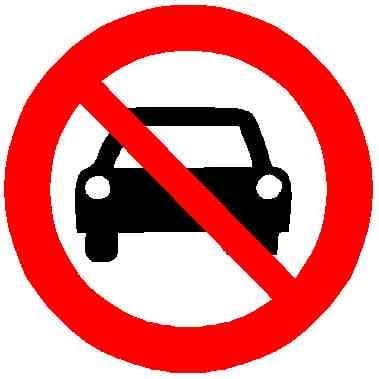“Schabas also found the government failed to provide evidence that removing the lanes would alleviate congestion — one of the law’s stated purposes. In contrast, expert testimony presented by the applicants suggested lane removal would likely increase collisions, injuries and even deaths.”
We need more bike lanes, not less, specifically going north-south
One thing that I think Ford might have accidentally gotten right for the wrong reasons is focusing on adding bike lanes to side streets instead of main thoroughfares. Why only stick bike lanes on main roads? Bikes can just as easily travel on side streets, where there is even less chance of getting hit by drivers in a hurry. For side streets that don’t go extend far enough, you could even start building dedicated bike paths to give bikes and pedestrians access that cars can’t use.
You put protected bikelane on main road mainly because it’s more dangerous to ride there, so now cyclist is out of the main path of the car and car won’t get blocked by cyclist. If there’s less danger on side street there’s no point putting a bikelane there.
It’s also more beneficial if there’s bikelane everywhere so people don’t need to share the road with car, which ironically is what car driver wanted as a lot of them refused to share the road with cyclist.
In my city, which is fairly hilly, it’s often the case that the oldest streets, the ones that became main thoroughfares, were sited the way they are in the first place because they were following the ridgeline. That means the main streets are often the flattest and thus most suited to biking, aside from the traffic.
Also, the main street is the one that has all the shops on it, which means it’s the one most “activated” for pedestrians and cyclists. Dedicating it to cars is, frankly, a waste.
https://www.archdaily.com/990889/activating-the-edges-how-to-create-lively-active-streets
https://www.nbr.co.nz/guest-analysis/why-street-activation-is-critical-in-urban-development-success/
That’s fair, but I was mostly speaking to Toronto specifically. In Toronto, the streets are laid out in a simple grid, and the landscape is comparatively flat.
The important point here is side streets in addition to arterials. Many routes through the city are inaccessible via only side streets, and many destinations exist along arterials. His attempt to remove arterial bike routes would make many trips impossible or take significantly longer.

Many routes through the city are inaccessible via only side streets
That’s the part I want changed. Make them accessible, but to bike and foot traffic only. Make it so that biking is actually easier than driving.
I agree. I’d also like to see the subway corridors that exist above ground (such as davisville) be given a fenced bike path as well
I made that argument to my city almost a decade ago. I dug deep in our city traffic design and planning documentation to find bike lanes were the excuse to choke vehicle traffic. Their measure of success is a reduction of vehicle miles driven. It’s not actually about safety, walkability, or bikes; we have all that already. It’s about making driving undesirable. So we have 400 miles of empty bike lanes now and unpredictable congestion. Slow clap
There’s no point presenting a logical argument to someone with an agenda.
Have you considered that those bike lanes may be empty because they are poorly designed, unsafe, or don’t go places people want to go?
Oh, they are over designed and have all the “safety” possible. They commandeered an entire lane, divided with cement curbs, built bus islands just after intersections so busses no longer pull over but block traffic on green lights, all on a main artery serving thousands of residents.
And I can walk to that street, any time of day, take a pic with my largest telephoto lens and the entire lane will be void of bikes. It cost hundreds of millions of dollars, and sits entirely wasted space.
It does sounds like badly design. Also maybe you should sit there whole day and let us know if there’s really no one using it(meaning usage is 0 bicycle per day), or it’s only used on peak hour. I’m honestly curious.
WOO 🎉🥳🍾





